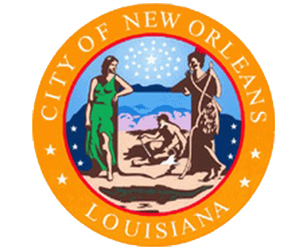
The city’s “BlightStat” meetings gather agency heads from across the city around the table to discuss benchmarks in the greater goal of eliminating 10,000 blighted properties from New Orleans in three years. Though the twice-monthly gatherings largely have the character of internal policy-shaping meetings, the Landrieu administration has opened them to the public, and neighborhood activists by the dozen have attended the first three meetings.
“It’s really nice to have access to the numbers, access to all the people in one room and to be able to ask questions,” said Eva Sohl of the Freret Neighborhood Center.
Thursday’s meeting, the third, still showed little in the way of concrete progress. Structure inspections have increased, but lot inspections have fluctuated, hearings have fallen off and property sales have stalled – all for a variety of reasons including internal communications breakdowns, the city’s mortgage-records crisis, new training schedules and the interruption of the holidays, officials explained.
Yet, the last two weeks did see the city tear down its first 33 properties under the Strategic Demolition program designed to begin moving properties into commerce (as opposed to emergency imminent-collapse cases that had to be demolished for safety reasons). Further, a higher proportion of code-enforcement hearings are reaching conclusions — roughly 60 percent, as compared to 30 to 50 percent in previous two-week periods.
At each meeting, city officials also add new charts and graphs seeking to track where the blight campaign is bogging down in bureaucracy. That public quest for information remains an encouraging sign to many Uptown neighborhood activists, such as Kara Morgan, president of the Irish Channel Neighborhood Association. No information was given about progress in the Irish Channel or any other specific Uptown neighborhoods, but Morgan said the meeting gave her more confidence that the city is getting the program launched.
One specific written question submitted by Sohl (who is helping spearhead Freret’s anti-blight campaign) was why the city is not cutting grass on blighted properties in City Council District B, which covers much of downtown, Central City and Uptown. After the meeting, blight director Jeff Hebert explained that a company passed over for the grass-cutting contract in District B (also in District E) during the Nagin administration had obtained a judge’s injunction preventing the city from awarding the contract to a higher bidder.
Moving forward, Hebert promised to find out the current status of that case and report it back to residents.
Byron Johnson of the Carrollton-Riverbend Neighborhood Association said his expectation prior to the first meeting had been that BlightStat would give neighborhoods an opportunity to learn about specific trouble spots they are dealing with. While that level of specificity has yet to emerge, watching the blight campaign take shape has its own value, Johnson said: he can better explain the process to other members of his neighborhood.
The campaign deserves time to get into motion, which Johnson said could reasonably be expected after the first of next year. At some point, however, he said he hopes to hear more about the fight against blight in densely-populated Uptown neighborhoods, where one nuisance property can negatively affect dozens of nearby neighbors, unlike some of the more sparsely-repopulated areas where the blight sweeps and demolitions are beginning to take place.
“We have blight in our own areas,” Johnson said. “It’s significant, and it’s where people live.”
Dot Wilson, who lives near the Desire area, said she too hopes future meetings will pay more attention to progress in specific neighborhoods. Her interest is the entire Upper Ninth Ward, but “They never mention it,” Wilson said. “These are questions that are relevant to the survival of our city.”